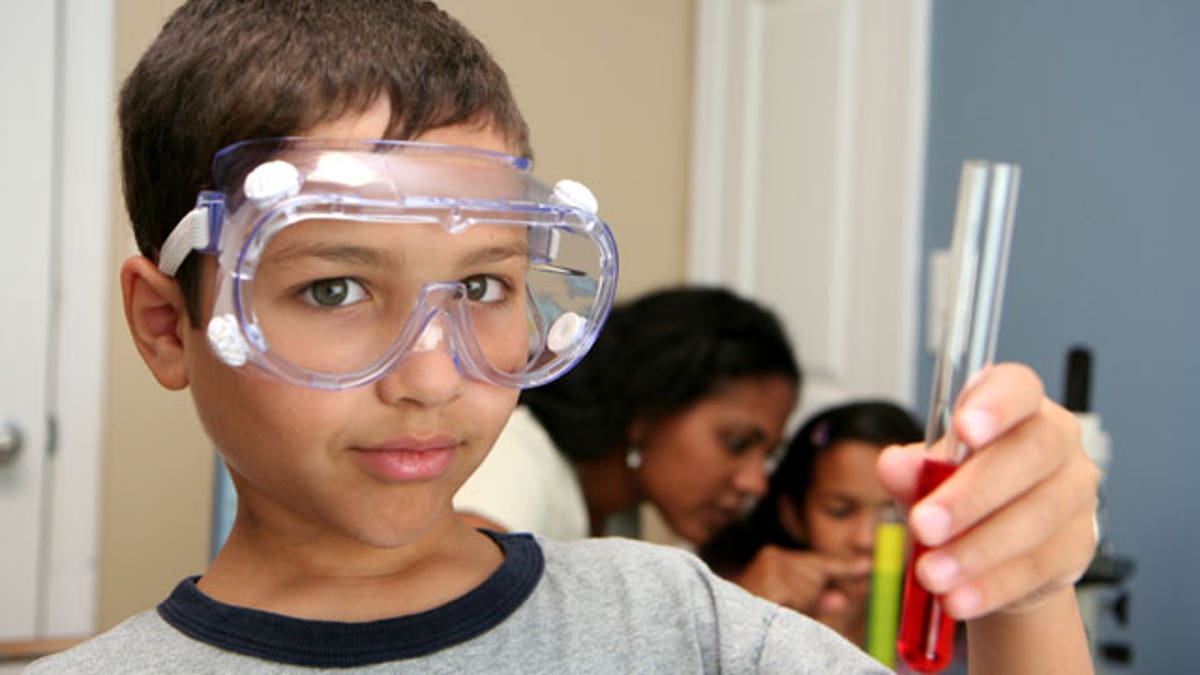
ST. LOUIS – When tallying victims of the Great Recession, add science fairs to the list.
Two big local science fairs, the Mastodon Art and Science Regional Fair and the Academy of Science -- St. Louis Science Fair, are facing massive cuts after sponsors dropped out.
"We don't have the manpower to organize the event or the money to pay for the supplies," said Jill Malcom, executive director of the Mastodon fair.
The woes of fair organizers like Malcom echo across the country. From school fairs to regional and statewide events, budget cuts threaten these showcases for student inventions and scientific research. Beyond blue ribbons, the fairs offer students college scholarships and are launch pads to prestigious national competitions and even careers.
The Academy of Science -- St. Louis Science Fair has been a tradition for more than 60 years. In recent years it has relied on two sponsors, Monsanto and Pfizer, to supply its $130,000 budget, said Mary Burke, the academy's executive director.
But Pfizer withdrew for the 2011 fair, leaving it with a $65,000 gap.
"If someone else doesn't come through, we'll be hit hard," Burke said.
Anne Wilson, a Pfizer spokeswoman, confirmed by e-mail that the company had sponsored the 2010 fair. She did not explain what prompted the company to pull its sponsorship for next year, but Pfizer laid off 8,000 workers worldwide last year, including most St. Louis-area employees.
The St. Louis Science Fair features the top 1,700 projects from local schools, Burke said.
The Mastodon fair touts itself as the largest science and art fair in the country and has been around for 31 years. About 3,000 students from Jefferson, Franklin, Washington and Crawford counties compete.
The fair awards more than $35,000 in scholarships and prizes, a sum that Malcom is loath to cut but worries she may have to. The fair also pays to send two top high school students to the Intel International Science and Engineering Fair.
But the fair is completely funded by donations from local businesses, many of which are struggling to stay afloat in a still-weak economy or have closed, leaving the fair's coffers depleted.
Last year's budget was $250,000. This year, Malcom must make do with $118,000. She took a $12,000 pay cut, dropping her annual salary to $38,000. And she had to lay off the fair's other employee, an operations manager, because there was no money to pay her $30,000 salary.
"We're really going back to basics," Malcom said.
The Broadcom Corp. of Irvine, Calif., has made science fairs a mission. It has established a foundation to foster science, technology, engineering and mathematics programs. Funding student science competitions and encouraging other companies to join them is a large part of that.
When the Irvine School District's science fair was on the verge of extinction last year, Broadcom stepped up to save the 2010 fair. But the foundation's focus is much broader.
"It's a national crisis," said Paula Golden, executive director of Broadcom Foundation.
The foundation is sponsoring a national science competition for middle-schoolers called the Broadcom MASTERS and is committing $1 million a year to the effort.
It's the "best and most efficient money a company can spend on its own future work force," said Paula Golden. Broadcom is a Fortune 500 company that develops chips for telecommunications.
Still, some local science fairs struggle on with no external support. The Missouri Tri-County Regional Science and Engineering Fair relies on participating school districts in St. Charles, Lincoln and Warren counties to pony up a collective $10,000 for the annual fair.
The fair has never been able to award scholarships, said fair director Donna Malkmus. Most of the budget goes to send two individual winners and a team of up to three students to the Intel international fair.
Boeing used to be a sponsor, said Malkmus, but the company shifted its emphasis to robotics competitions.
"There is no guarantee from year to year," she said. "It's frustrating."
The Illinois Science Olympiad, which holds 23 statewide science competitions, is expecting a 20 percent reduction in participation because of tight school budgets, said Joe Simmons, co-state director.
"This past year we got hit hard by the economy," he said. "... We've had schools where we said we'd waive their fees and, no, the school told us they can't compete because it cost too much for transportation."
"It's really disappointing when you hear that the schools choose to cut the science activities."
Gechen Zhang, a senior at Rockwood Summit High School, credits the fair at Queeny Park for encouraging his love of biology, a field he plans to enter as a career.
Zhang, 18, discovered a new plant species in the impatiens flower family -- one with unusual purple leaves -- in China last summer. He entered the Greater St. Louis Science Fair and won a trip to the Intel international fair in May. He recently competed in the Siemens Competition in Math, Science and Technology at the University of Notre Dame.
"The science fair has opened so many doors for me," said Zhang.
Adam Bergeron, a science teacher at Parkway Central High School, said science fairs are particularly beneficial for older students. "Overall, especially when you get to the honors level, there's nothing better than giving the students the opportunity to present their work and communicate it to judges," he said.
"For younger kids, it's practicing an aspect of what they learned outside the classroom," Bergeron added.
Organizers of the fairs in St. Louis and in Jefferson County vow to keep them alive, even if it requires raising money the hard way.
Malcom, the Mastodon fair director, put on a pet parade in Festus that raised about $1,000 and held a trivia night in Hillsboro that brought in $5,400.
"Everybody has the same mission, and that mission is to keep the fair going," she said. "And we will do that."
